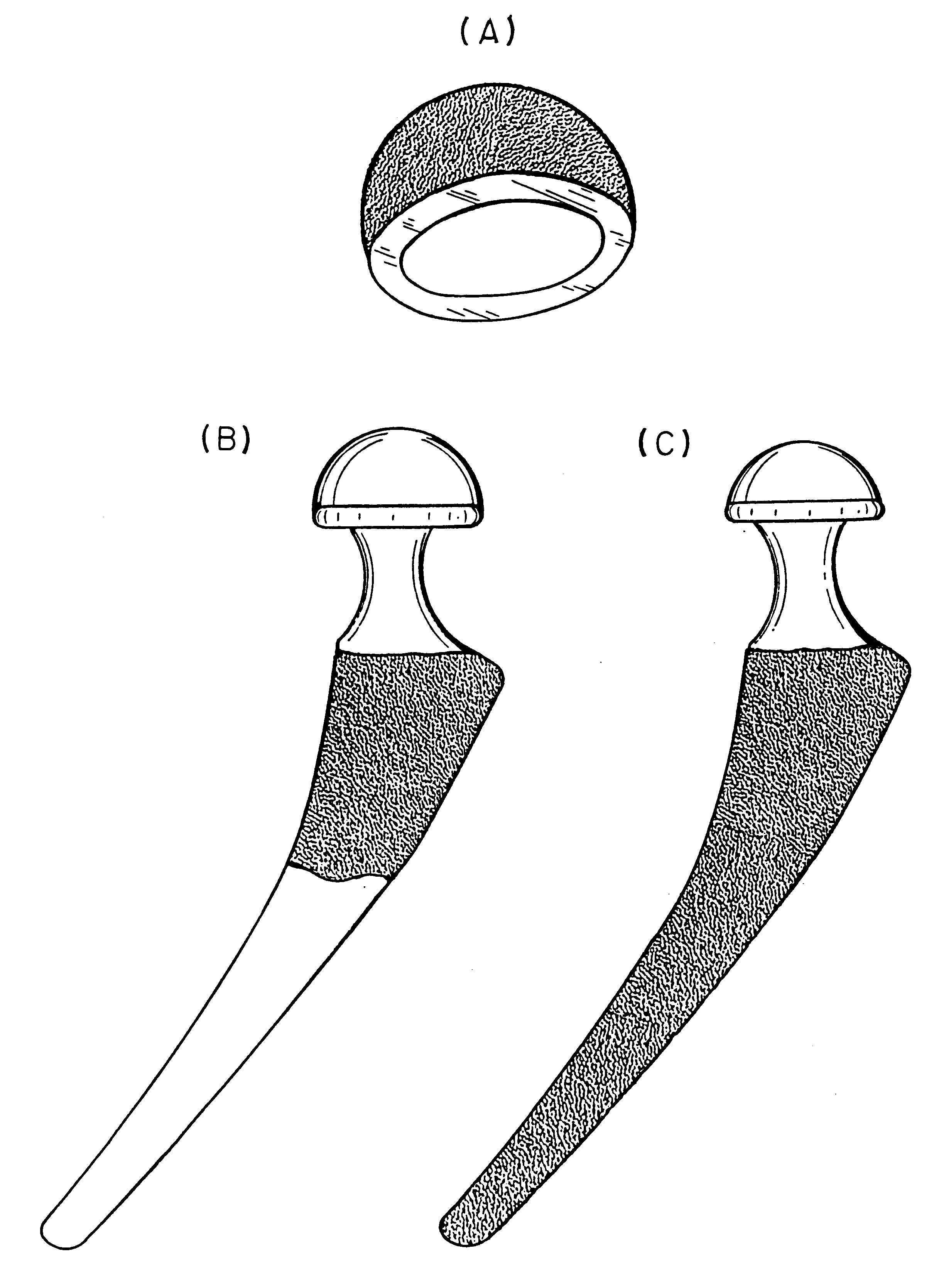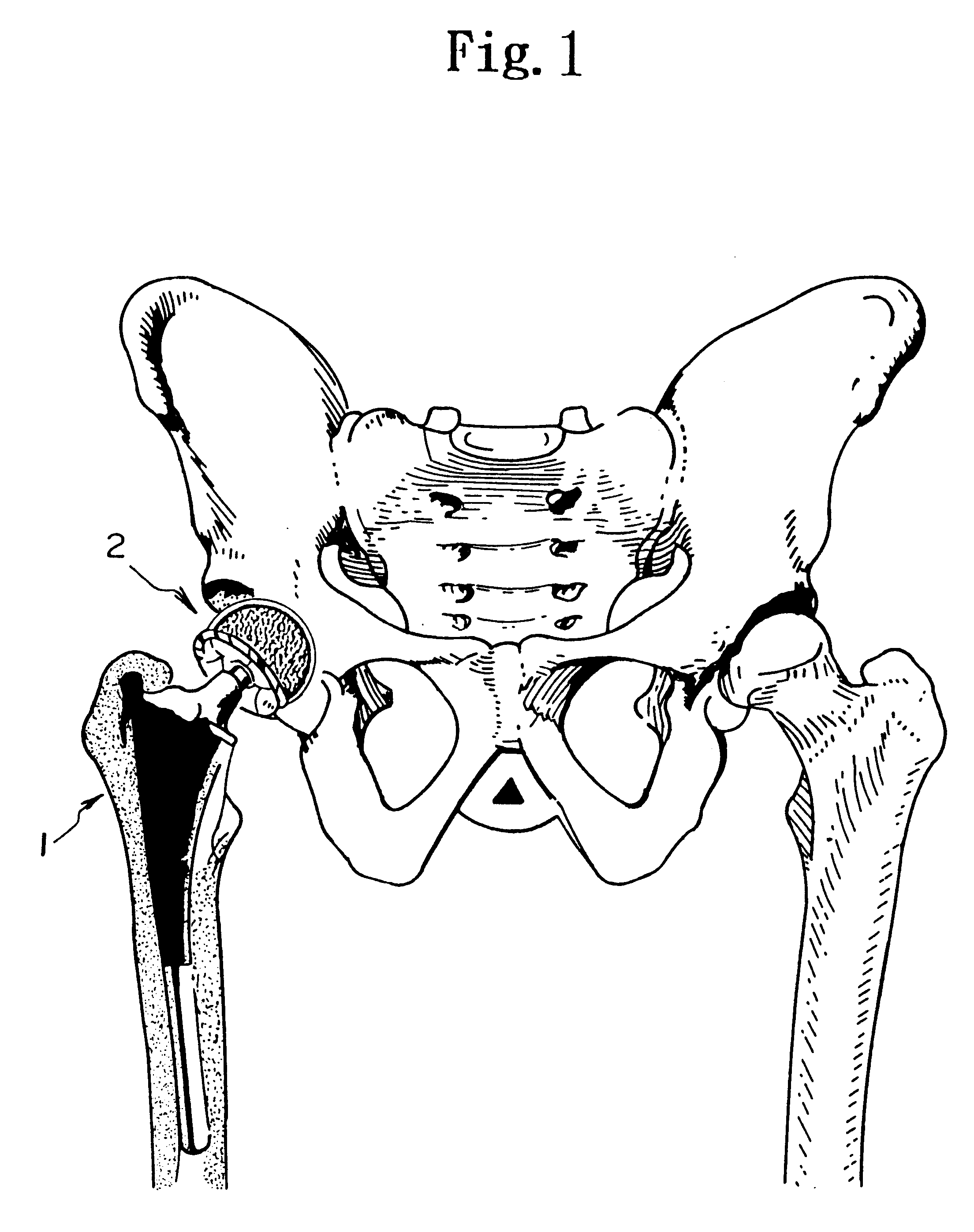Orthopedic implant system
a technology of implant system and orthopedic head, which is applied in the direction of prosthesis, femoral head, joint implant, etc., can solve the problems of excessive tissue response, patient discomfort and pain, and loose (or unstable) implant function, and achieve strong interlocking fixation
- Summary
- Abstract
- Description
- Claims
- Application Information
AI Technical Summary
Benefits of technology
Problems solved by technology
Method used
Image
Examples
embodiment
A production trial was carried out to fabricate a titanium foam metal sheet. For the present trial, a commercially available aluminum foam block which has an average open-cell size of about 1 mm diameter was employed. This block is a product from ERG, Inc., as described previously. A basic idea was to replicate the aluminum foam structure to be replaced by titanium metal. A molding cement was prepared and fed into open cells of the aluminum foam structure. After hardening the molding cement, the mold was heated in a furnace at 670.degree. C. for about 1 hour to let all aluminum melt and flow out the mold. Then the mold with open-cells was placed into a vacuum-controlled casting machine for titanium. After the all titanium was solidified, the mold was removed from the casting machine and the molding cement was removed by using the air-borne particle blasting machine with fine particle of aluminum oxide. The surface topology of titanium foam sheet was observed to be identical to origi...
PUM
| Property | Measurement | Unit |
|---|---|---|
| thickness | aaaaa | aaaaa |
| thickness | aaaaa | aaaaa |
| ultimate tensile strength | aaaaa | aaaaa |
Abstract
Description
Claims
Application Information
 Login to View More
Login to View More - R&D
- Intellectual Property
- Life Sciences
- Materials
- Tech Scout
- Unparalleled Data Quality
- Higher Quality Content
- 60% Fewer Hallucinations
Browse by: Latest US Patents, China's latest patents, Technical Efficacy Thesaurus, Application Domain, Technology Topic, Popular Technical Reports.
© 2025 PatSnap. All rights reserved.Legal|Privacy policy|Modern Slavery Act Transparency Statement|Sitemap|About US| Contact US: help@patsnap.com



